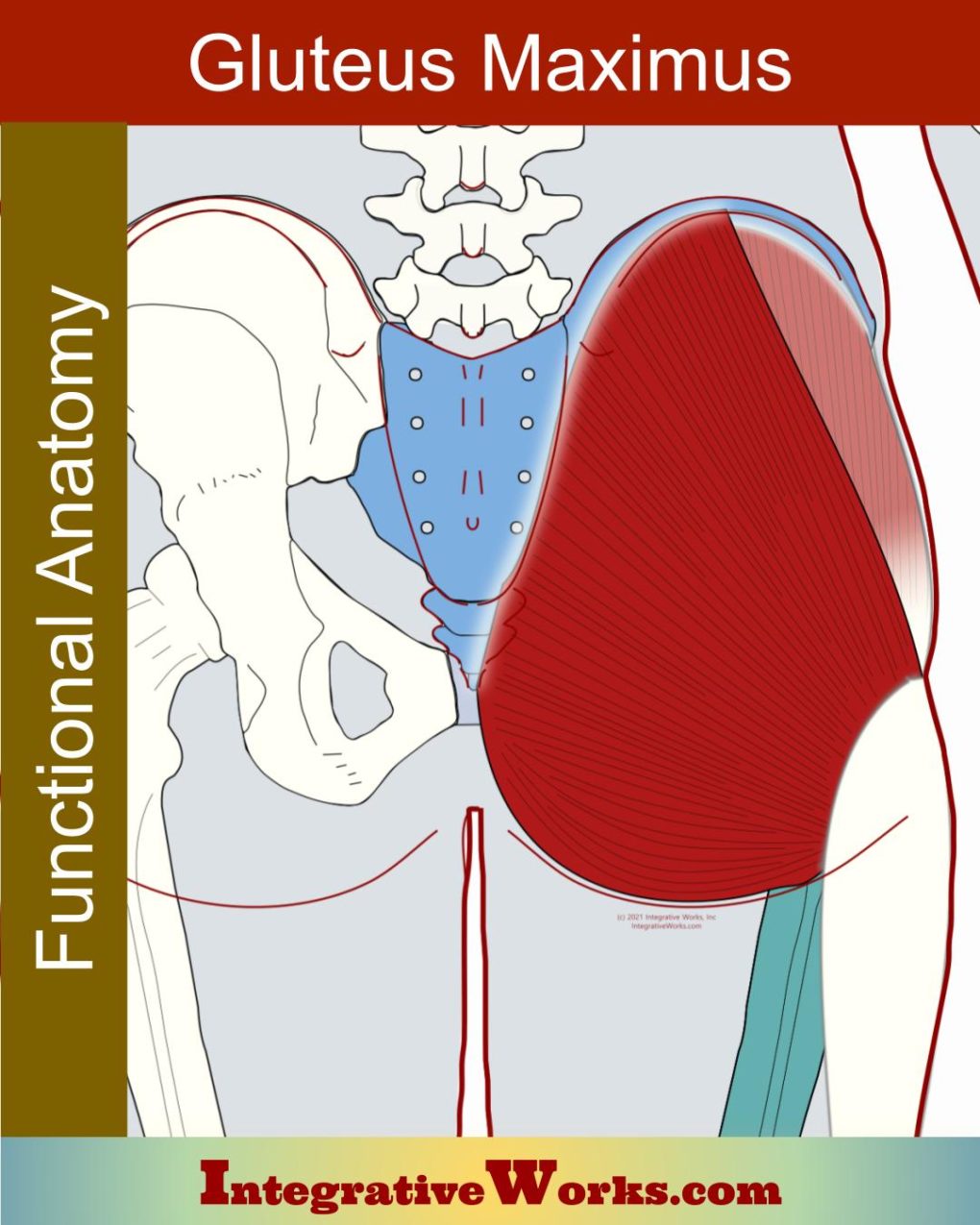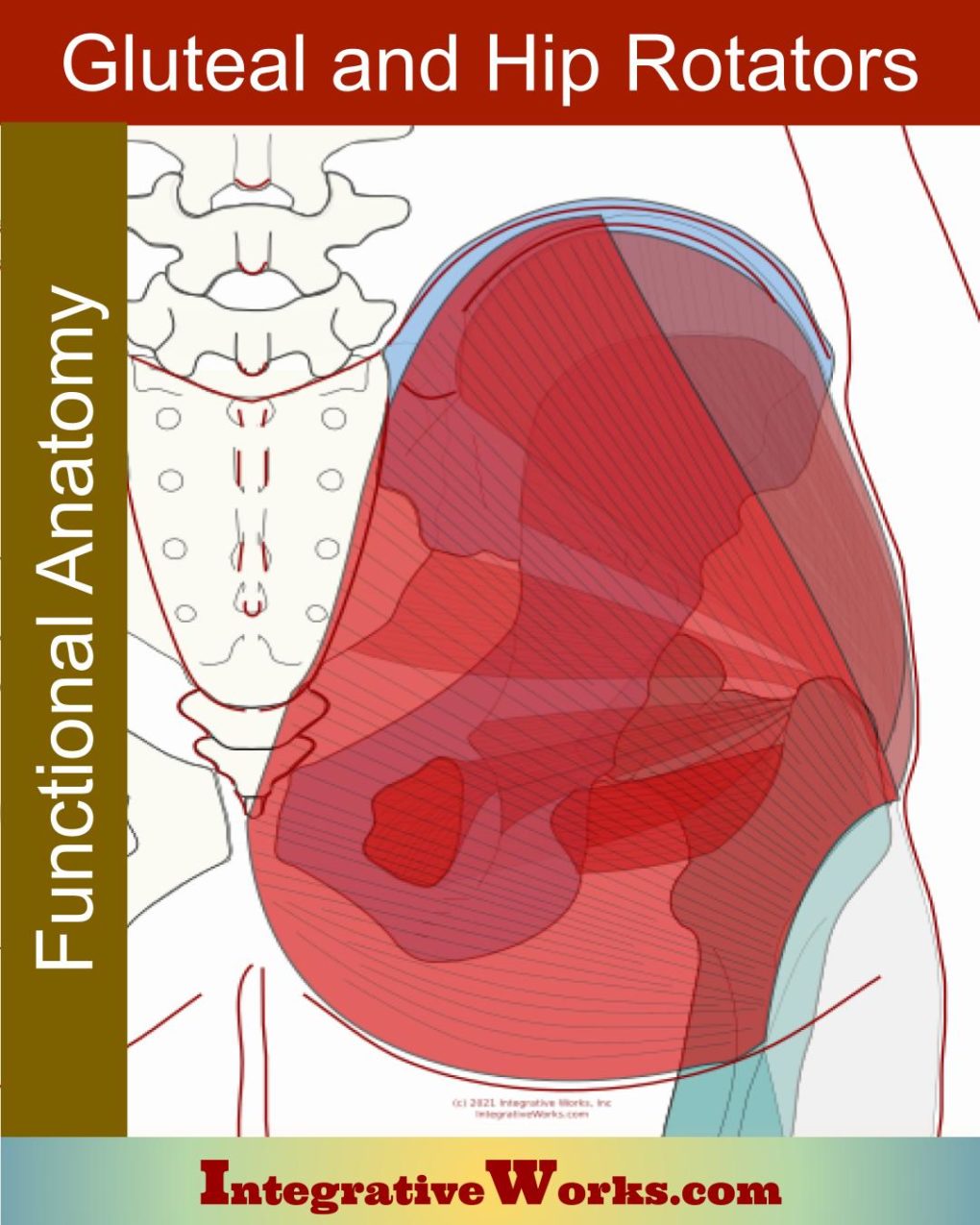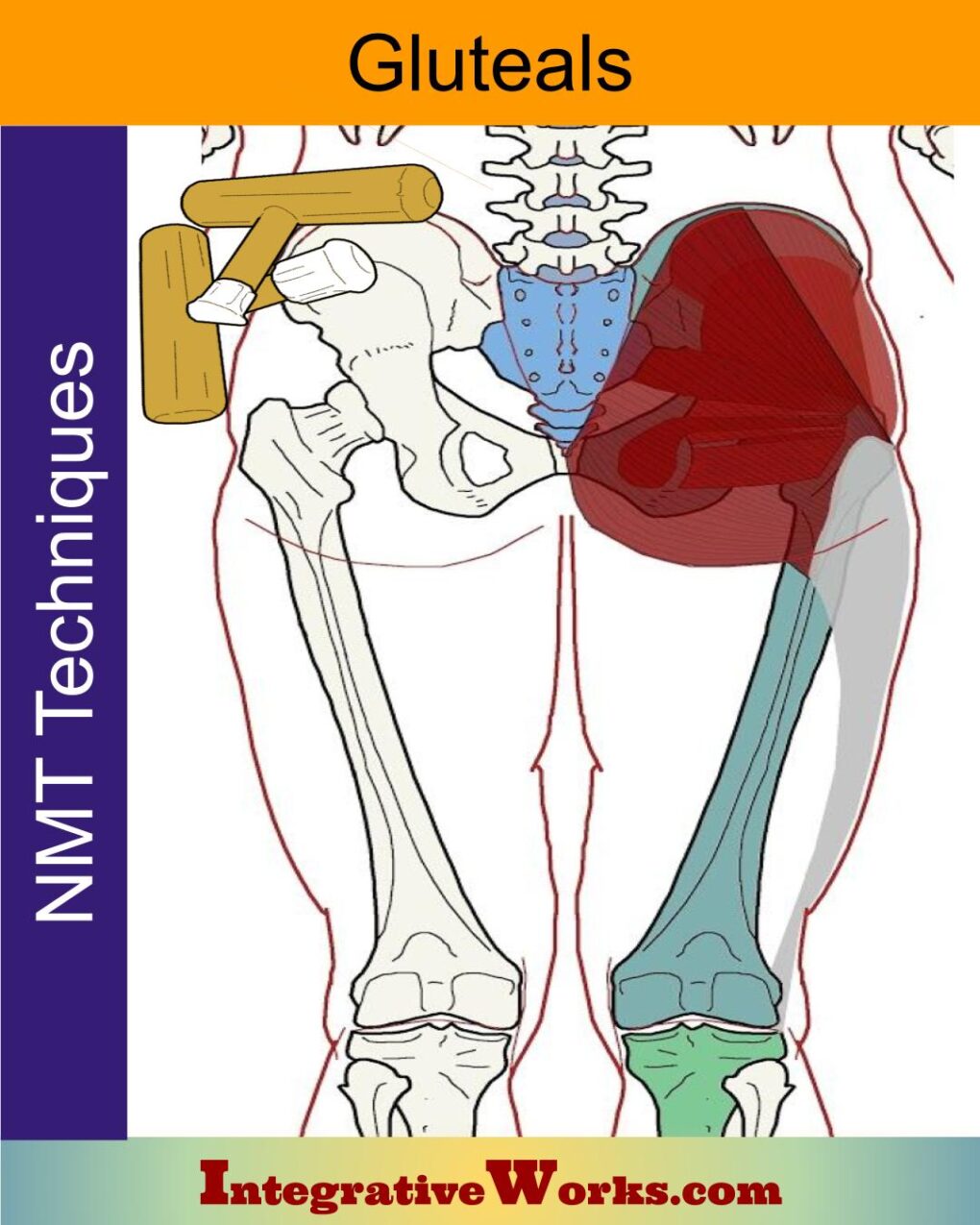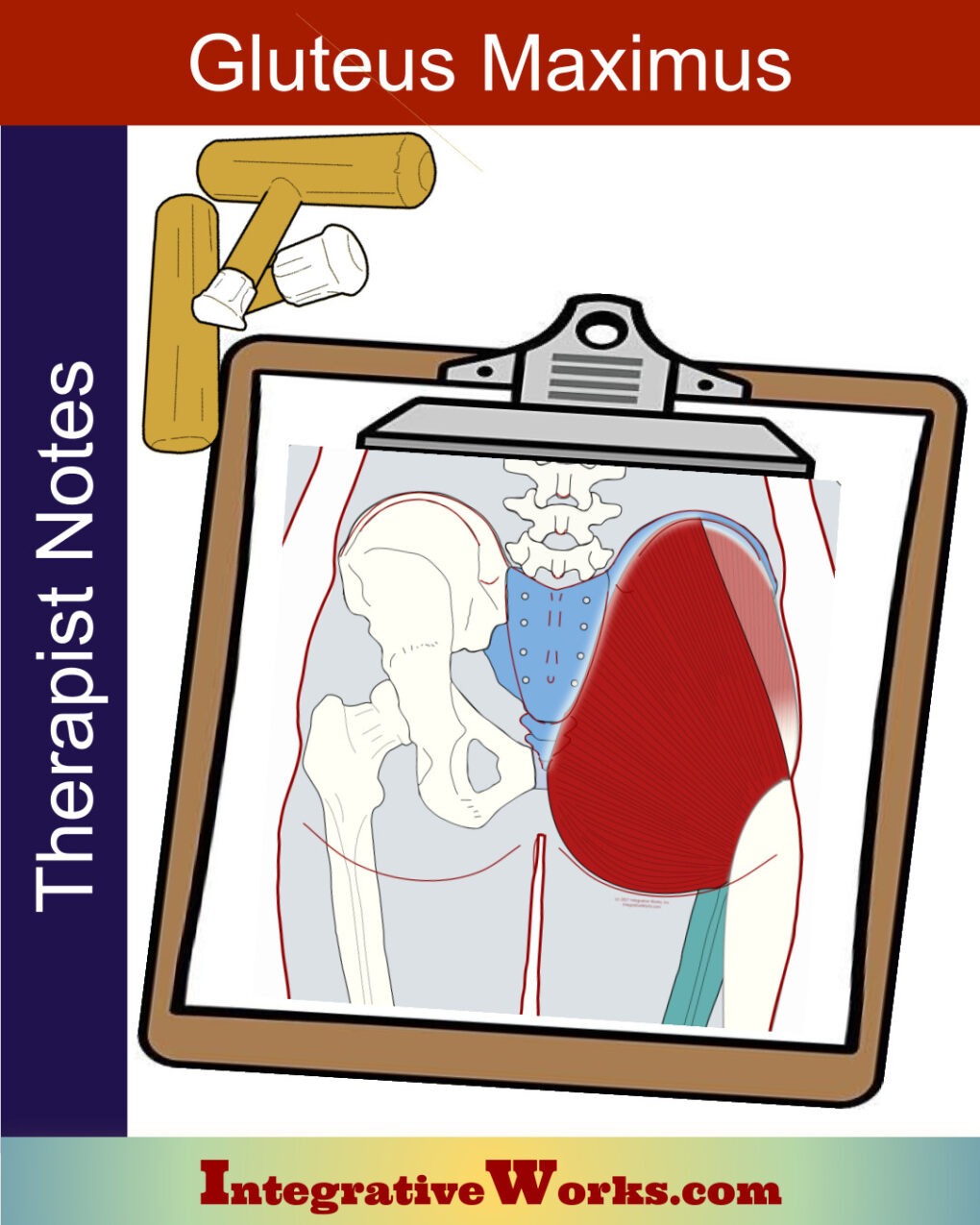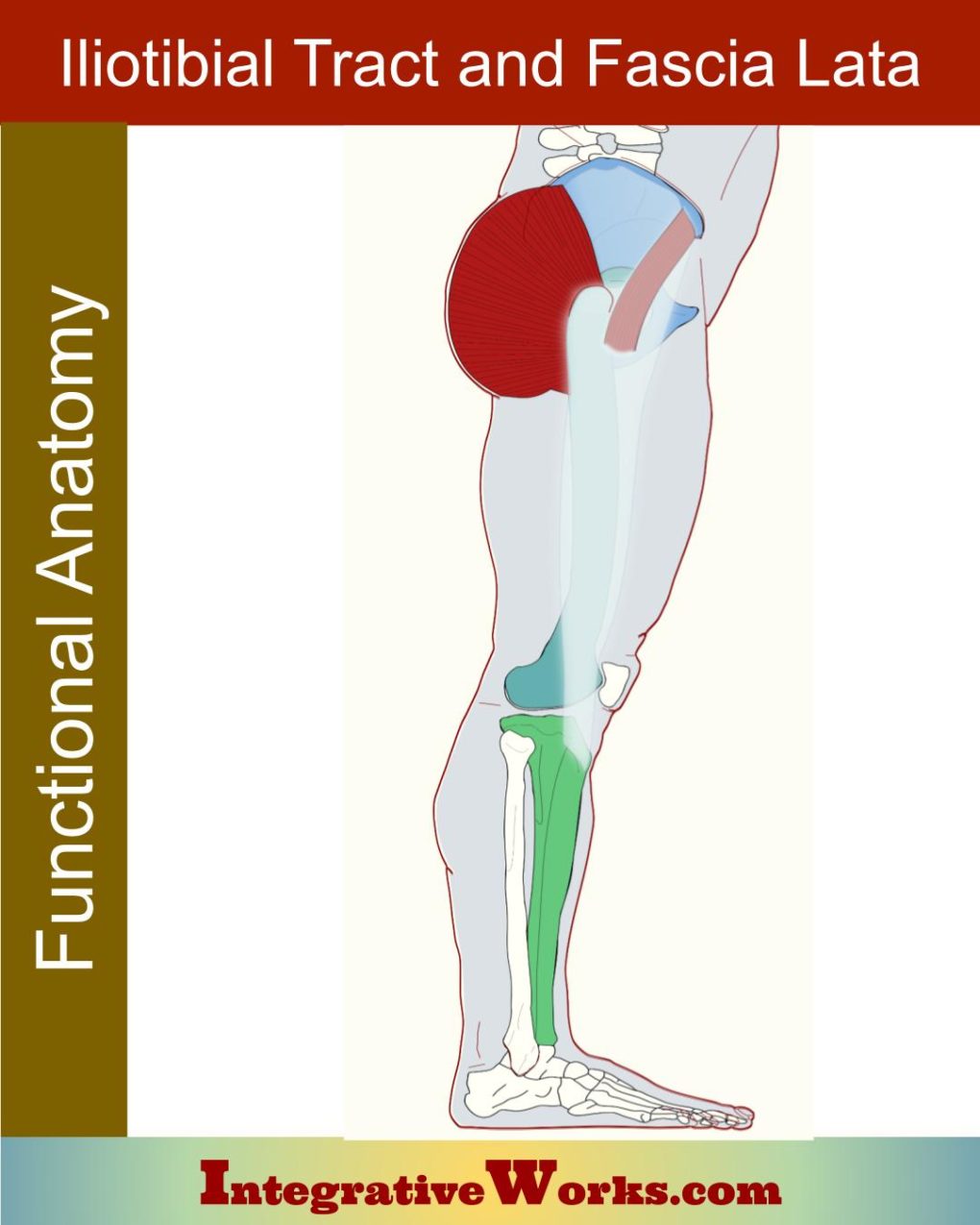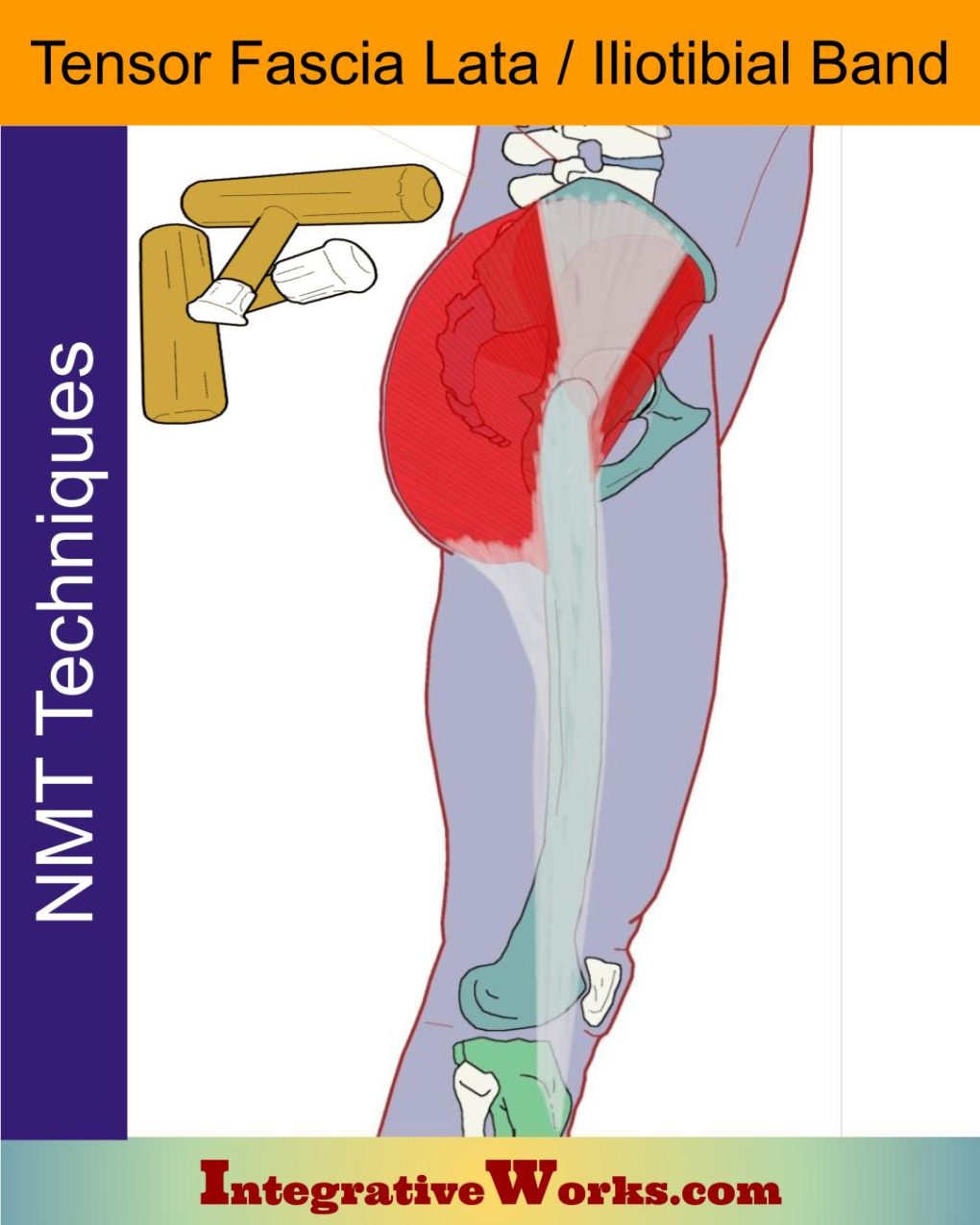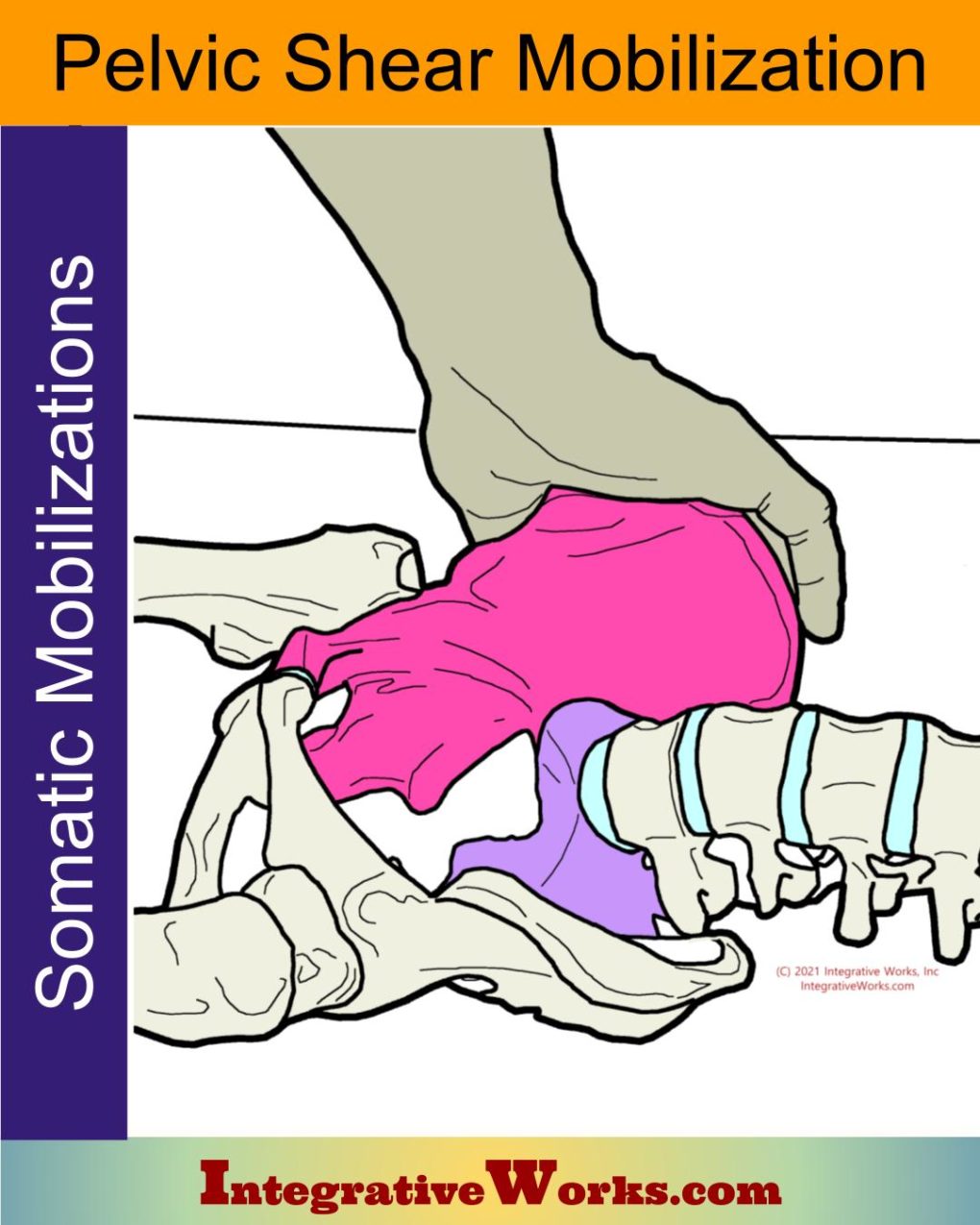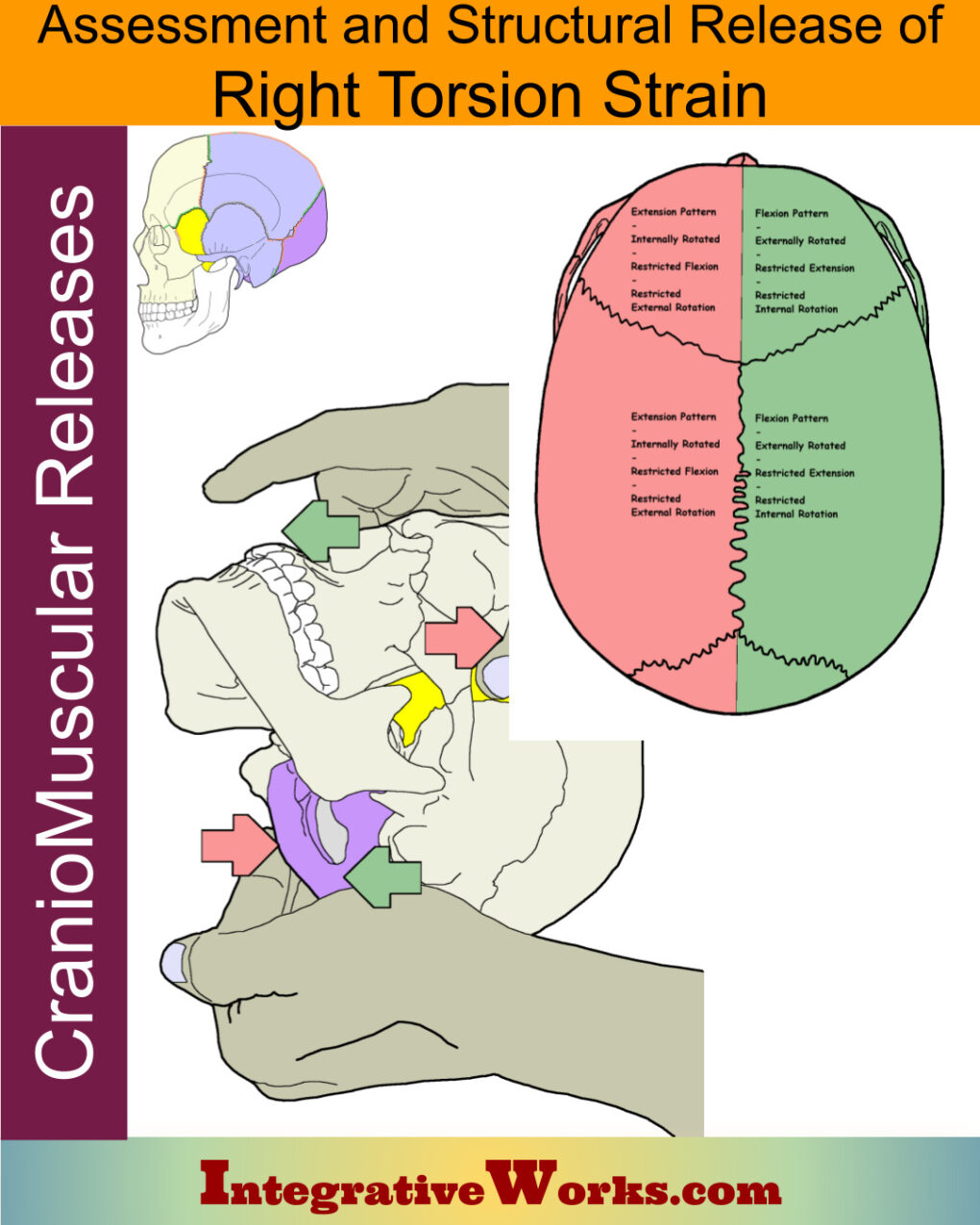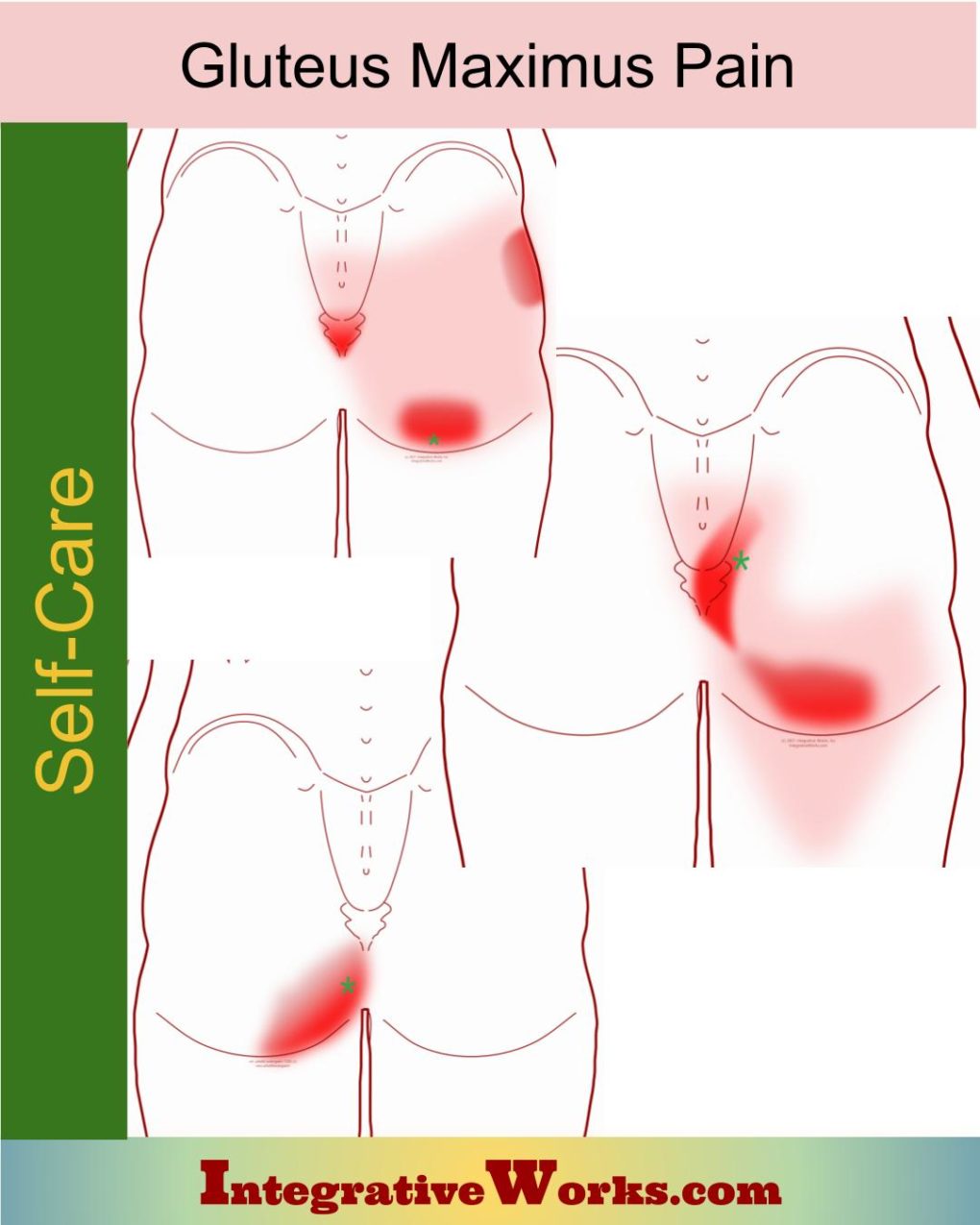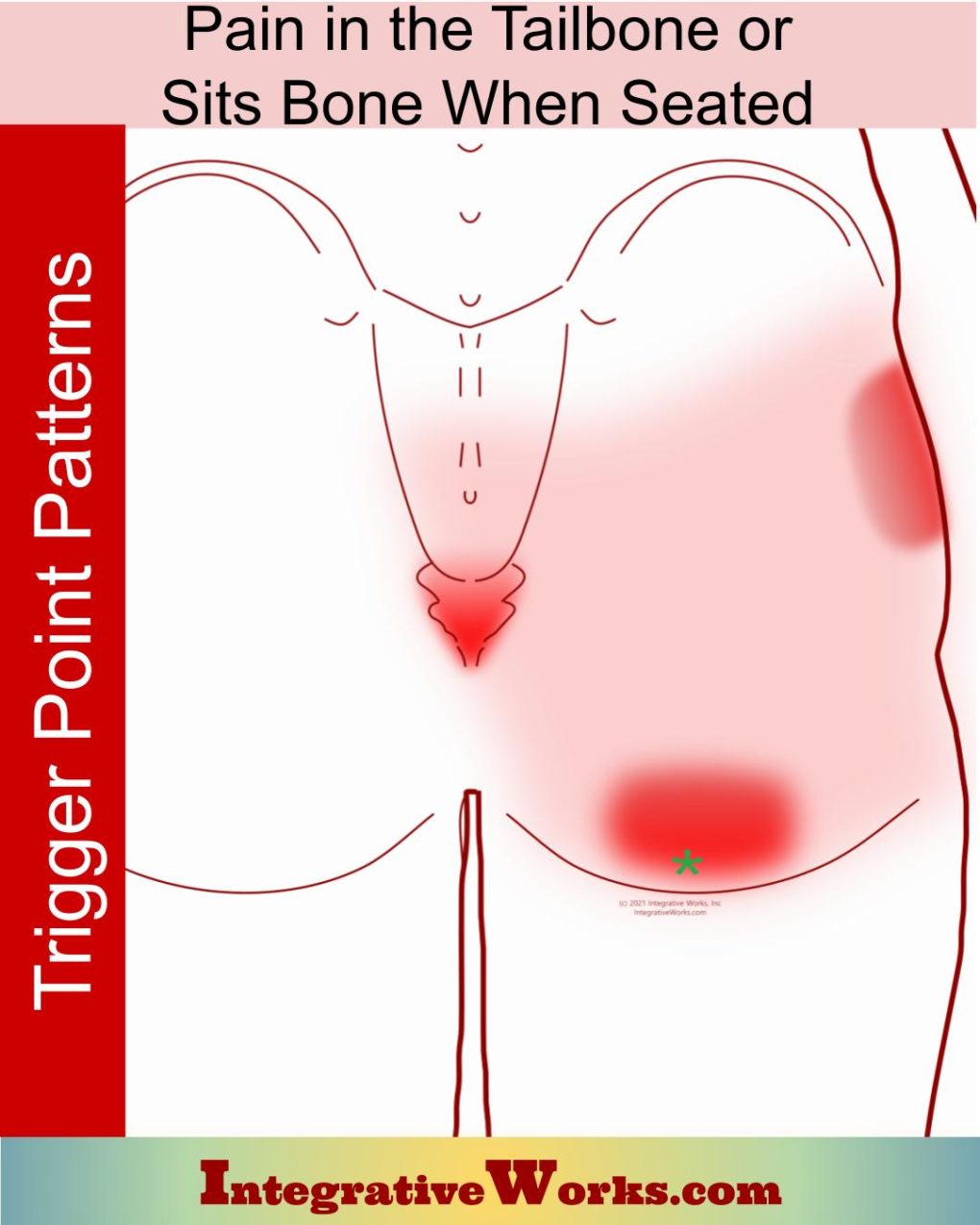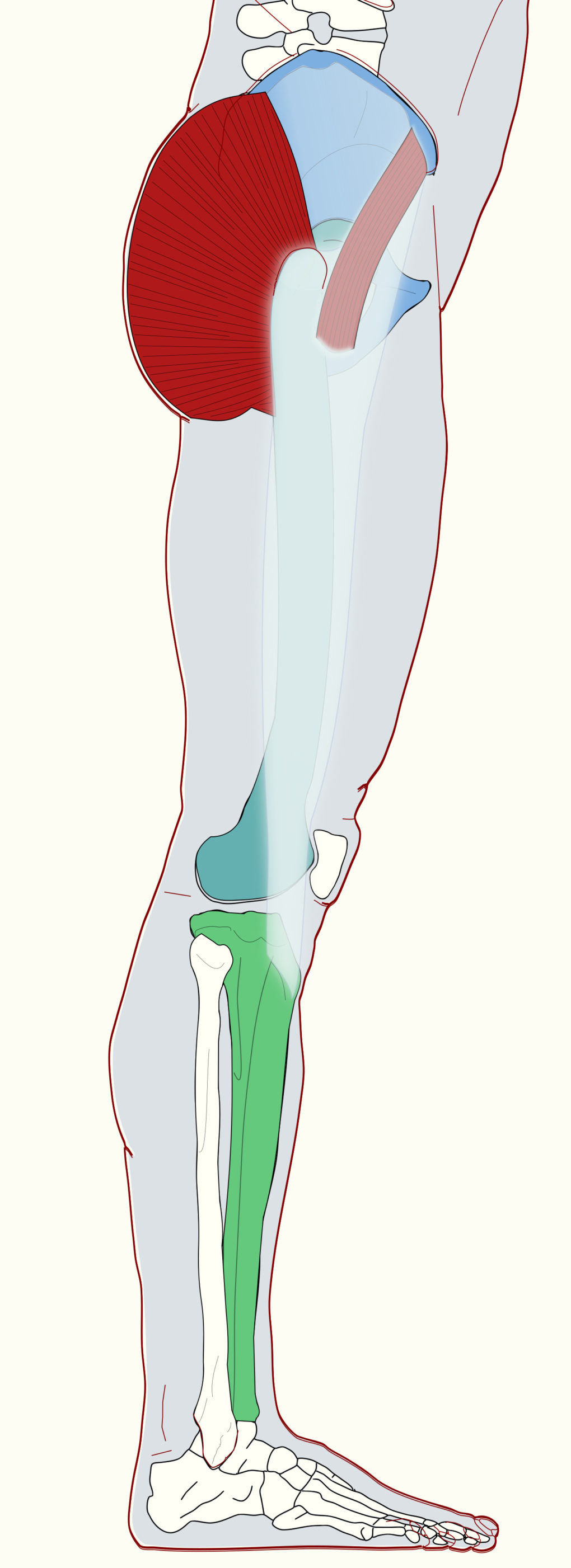
Overview
The gluteus maximus is a large flat muscle on the posterior hip. It is the largest muscle in the human body. It is seen as one of the distinctive human features as it is larger and more developed than other mammals, including apes.
Origin
- bony attachments of the posterior crest of the ilium, sacrum, and coccyx
- the sacrotuberous ligament
- aponeurosis of the erector spinae
- posterior portion of the gluteal aponeurosis
Insertion
- gluteal tuberosity
- lateral proximal tibia via iliotibial tract
The deep fibers of the gluteus maximus insert on the gluteal tuberosity and IT band. However, studies vary on the superficial fibers. Some say that only the upper fibers insert into the IT band and all the lower insert into the gluteal tuberosity. Others say that all superficial fibers insert into the IT band.
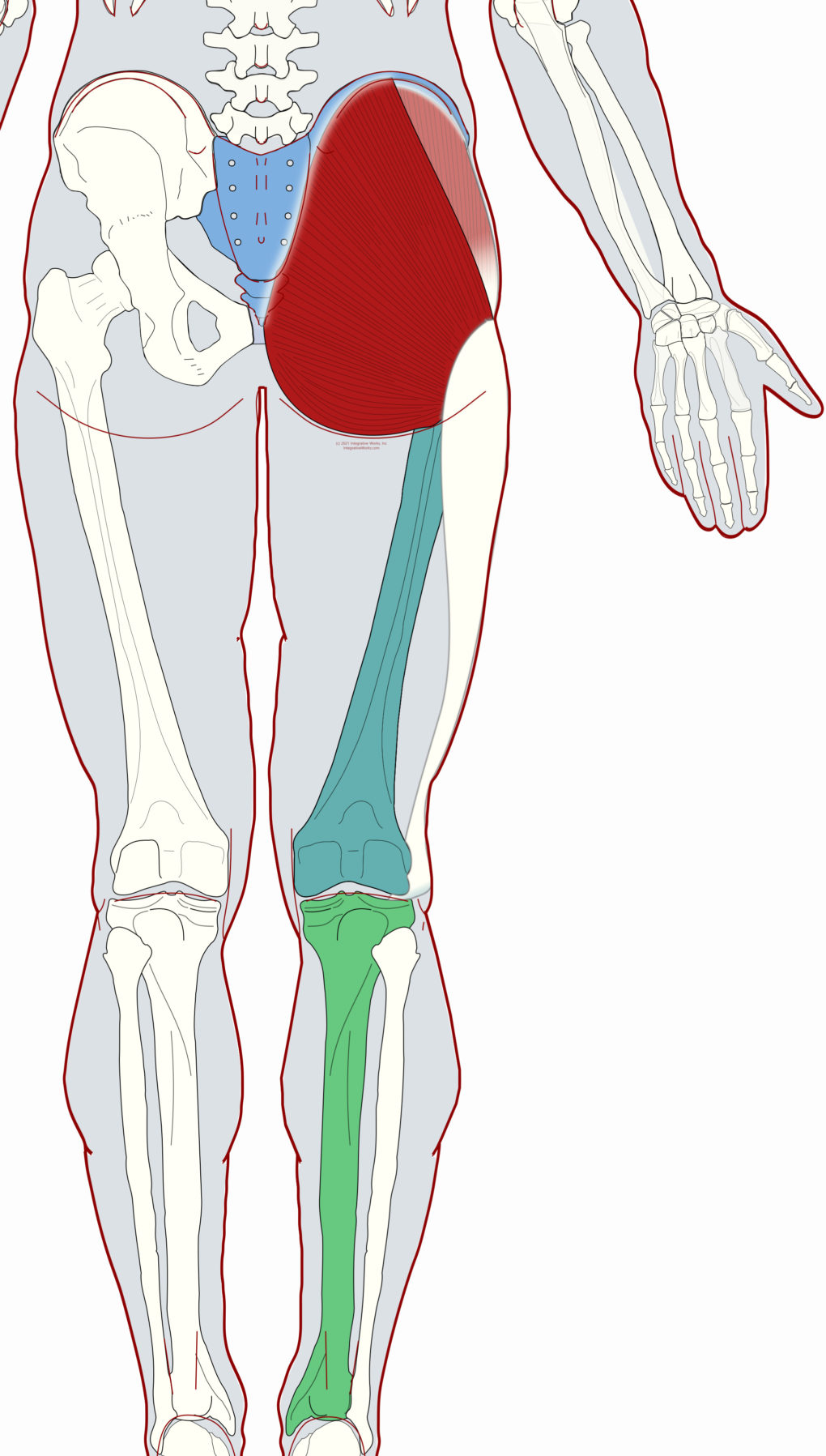
Function
- extension of the hip
- stabilization of the knee
- external rotation of the hip
Most references state that the gluteus maximus extends the hip joint through the gluteal tuberosity and stabilizes the knee through the iliotibial band. They largely agree that it externally rotates the hip joint through the lower fibers. It is considered a weak abductor through the upper fibers and a weak adductor through the lower fibers, depending on the position of the gluteal tuberosity.
Innervation
- Inferior gluteal nerve
- dorsal branches of the ventral rami of L4, L5, S1
- S2 spinal nerves
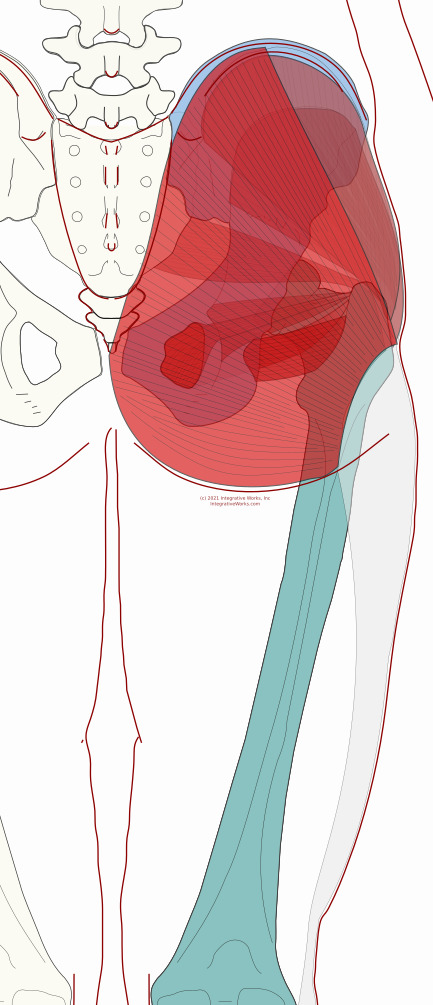
Functional Considerations
Research conclusions on this muscle vary and, at times, seem contradictory:
- Some studies state that it is large because it maintains an erect posture. Other studies show it to be inactive while standing.
- One electromyographical study shows that the gluteus maximus is most active in side plank abduction, yet most anatomy sites consider it to be a weak abductor.
Other conclusions were: - females exhibit greater GM excitation than males in all exercises
- unilateral exercises exhibit greater excitation
- bracing abdominal muscles increase excitation.
Anomalies, Etc.
Like the IT band, I find contradictory studies more than finding studies that talk about anomalies. Also, it seems easier to find studies about differences in innervation than structural anomalies.
The deep fibers of the gluteus maximus insert on the gluteal tuberosity and IT band. However, studies vary on the superficial fibers. Some say that only the upper fibers insert into the IT band and all the lower insert into the gluteal tuberosity. Others say that all superficial fibers insert into the IT band.
Related Posts
Gluteal and Lateral Hip Rotator Muscles – Functional Anatomy
Gluteals – Neuromuscular Massage Protocol
Gluteus Maximus – Massage Therapy Notes
Iliotibial Tract and Fascia Lata – Functional Anatomy
Leg Slap Pelvic Mobilization
Morton’s Foot Structure
Neuromuscular Protocol – Iliotibial Band
Pelvic Shear – Technique
Right Torsion – CranioMuscular Assessment and Release
Self Care – Releasing hip trigger points with a tennis ball
Self-Care – Gluteus Maximus
Tailbone or Lower Hip Pain When Seated
Support Integrative Works to
stay independent
and produce great content.
You can subscribe to our community on Patreon. You will get links to free content and access to exclusive content not seen on this site. In addition, we will be posting anatomy illustrations, treatment notes, and sections from our manuals not found on this site. Thank you so much for being so supportive.
Cranio Cradle Cup
This mug has classic, colorful illustrations of the craniosacral system and vault hold #3. It makes a great gift and conversation piece.
Tony Preston has a practice in Atlanta, Georgia, where he sees clients. He has written materials and instructed classes since the mid-90s. This includes anatomy, trigger points, cranial, and neuromuscular.
Question? Comment? Typo?
integrativeworks@gmail.com
Interested in a session with Tony?
Call 404-226-1363
Follow us on Instagram

*This site is undergoing significant changes. We are reformatting and expanding the posts to make them easier to read. The result will also be more accessible and include more patterns with better self-care. Meanwhile, there may be formatting, content presentation, and readability inconsistencies. Until we get older posts updated, please excuse our mess.

